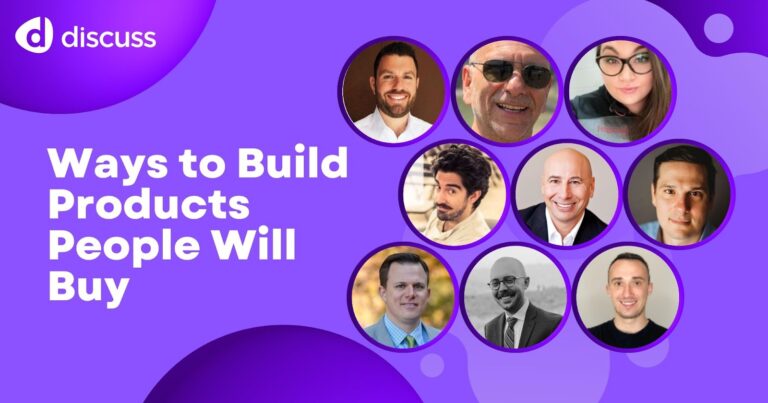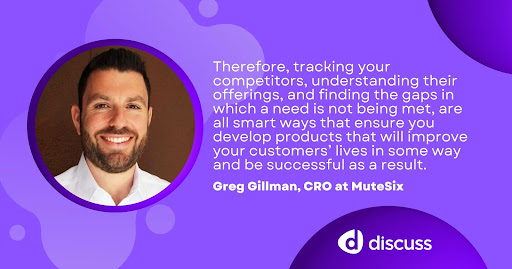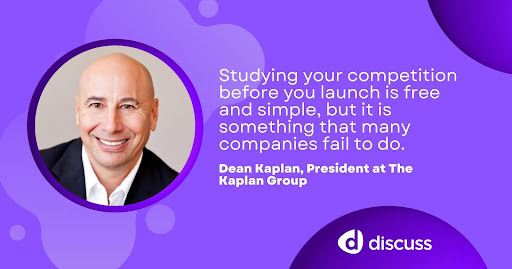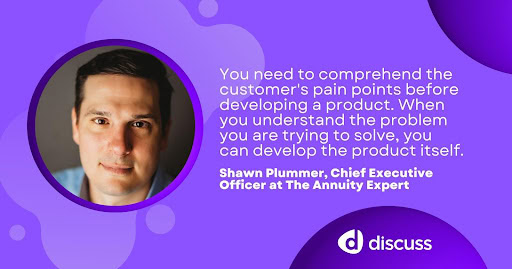13 Ways to Build Products People Will Buy

How can companies build products that people will buy?
To help you build the best products people will buy, we asked startup founders and business leaders this question for their best insights. From researching the viability of the product first to narrowing in on a specific sub-niche, there are several tips that companies are advised to follow to successfully build products that people will not hesitate to buy.
Here are 13 tips these leaders follow to build products people readily buy:
- Research the Viability of the Product First
- Focus on Being Instrumental Rather Than Innovative
- Perform Market Research Before Product Design
- Research In-Demand Recession-Proof Markets
- Use a Weighted Scoring Model to Prioritize Features
- Run a Test Google Adwords Campaign
- Utilize Feedback at Every Step of the Product Development
- Name Your Product Something Memorable and Meaningful
- Study Your Competition
- Understand the Problem You Are Trying to Solve
- Beta-Test Your Products Before Official Launch
- Provide a Unique and Sustainable Product
- Narrow-in on a Specific Sub-Niche
1. Research the Viability of the Product First
You need to first gauge interest around your product before your R&D department delivers a quality prototype. A less expensive way to do this over focus groups is through social listening and online polls. Both are effective ways to test whether or not consumers are open to your product. Once you understand the general sentiment around your idea, then you can move to focus groups and more traditional research methods.
The beauty about using free digital marketing platforms is you already have a captive audience in your followers. Tap into this resource and use the data you glean in presentations to stakeholders, leadership, and others. Social listening can also deliver insights about how ready the market is for your new product. Have someone monitor any mentions, engage with followers, and handle all communication around the pitched concept.
Jerry Han, PrizeRebel
2. Focus on Being Instrumental Rather Than Innovative
Though we hear the word “innovation” constantly associated with products, the key to creating one that will continuously sell should really be “instrumental.” Countless entrepreneurs have brought great ideas and products to market that have failed, not because they were not clever, but because they failed to meet a fundamental customer need. Therefore, tracking your competitors, understanding their offerings, and finding the gaps in which a need is not being met, are all smart ways that ensure you develop products that will improve your customers’ lives in some way and be successful as a result. By focusing on being instrumental rather than innovative, you can effectively build the products that people need and will more likely buy.
Greg Gillman, MuteSix

3. Perform Market Research Before Product Design
People will only buy products that are relevant to their needs. The best way to get inside of your target’s mind is to be straightforward and ask them. Market research allows you to uncover the true pain points of a selected demographic, what they wish they had to solve their problem, and why they believe it would be useful. Infuse those key points into your product design to create an irresistible offer. Market research doesn’t stop at the physical product design, however. Copywriting is the second major driving force behind driving sales for a product.
One of the most successful strategies you can implement to boost conversions is to use direct phrases from your market research surveys in your website copy. Take it directly from your target customer’s mouth, then weave it into your brand message. This will create the “wow” factor that makes people think, “how did they know that?” It’s one of the best tactics to sell a relatable product.
Stephen Light, Nolah Mattress
4. Research In-Demand Recession-Proof Markets
It’s always excellent practice to research the in-demand and recession-proof markets to target before creating a product consumers would buy. Some niches and industries, such as physical and mental wellness, home essentials, creative solutions, and even pet products, will continue to attract consumers in years to come. Once you have gained valuable insights into these markets, you can create a product that presents innovative and productive solutions that consumers would want. It’s best to know which industries will less likely be affected by economic downturns in the future.
Nunzio Ross, Majesty Coffee
5. Use a Weighted Scoring Model to Prioritize Features
When you’re developing products, you’re likely trying to solve several problems and reach many goals at once. To design a more successful product, you need to prioritize your customer’s pain points and your solutions according to their importance. Build a priority list and use a weighted scoring model to evaluate each pain point/solution based on the user’s impact, reach, cost to implement, confidence of success, and barriers to entry. With the weighted scoring model, you prioritize based on each solution or features relative importance, you ensure a better product. Your customers get exactly what they need most out of your product first, then you work your way down the list to add less important features.
John Li, Fig Loans
6. Run a Test Google Adwords Campaign
A quick and relatively inexpensive way to test demand for your new products is by performing a test Google Adwords campaign. Start by creating a sales page online for your new product and include your proposed price and a “buy” button.
Now you need traffic on this page to test your idea. The quickest way is to spend some money on Google Adwords and run PPC ads that send traffic to your sales page. If people click the buy button, you should let them know that your product is not yet available but ask for them to leave their email address so they can be notified when you release it. This is a smart strategy because not only are you testing the market for your product, you are building a pre-launch list of prospects that you can reach out to when your product is released.
Leanna Serras, FragranceX
7. Utilize Feedback at Every Step of the Product Development
The best way for companies to build more products people will buy is by asking people directly what they want. Go beyond focus groups and online feedback and talk directly with customers about a product. This needs to be done at every step of product development to get the fullest possible picture of what people need. You never know what an outside perspective will bring to a product that is about to launch. One of their suggestions could revolutionize an already stellar idea and reach even more consumers.
Phillip Akhzar, Arka
8. Name Your Product Something Memorable and Meaningful
Your customers’ first impression of your product will be with its name so take care to make it something both memorable and meaningful. Our product, a tattoo numbing cream, is aptly named HUSH. It’s funny, on brand, and is short enough to be easily identifiable on the product itself. When you have a name that meets these criteria, you simplify the shopping experience for your customers and make it easy for them to remember why they are buying your product.
Ubaldo Perez, Hush Anesthetic
9. Study Your Competition
Whatever your product, it’s likely that other companies are selling something similar. You can see how these companies are doing with a Google search for your product (you can use a generic name). Once you’ve found these competing companies, look for signs that there is a market for your product. If your competitors have a strong following on social media, that is usually a good sign. See if you can find many customer reviews of their products, which is another good sign. Lastly, see if the company has been around a while by looking at them on WHOis.net as this shows long-term demand for their products. Studying your competition before you launch is free and simple, but it is something that many companies fail to do.
Dean Kaplan, The Kaplan Group

10. Understand the Problem You Are Trying to Solve
Start by asking what problem you are solving. People will pay for the solution if your product solves a painful problem. If you solve the wrong problem, however, you’ve created a product that no one wants. Be willing to spend some time at this step of the process doing intense market research. You need to comprehend the customer’s pain points before developing a product. When you understand the problem you are trying to solve, you can develop the product itself.
Shawn Plummer, The Annuity Expert

11. Beta-Test Your Products Before Offical Launch
The best way to gauge the success of a product is to invite a sample of your target audience to test it. Your trial group will have free access to your product for a limited time so they can implement it into their real-life scenarios. They can then assess the effectiveness of your product and report back on any weaknesses and suggestions to improve. Beta testing allows you to strengthen the quality of your product so you can offer a high-value commodity during your official launch. You should also include prompts for beta testers to highlight what they liked about your product—you can use these as early-stage testimonials to boost your marketing campaigns and encourage sales.
Stephan Baldwin, Assisted Living Center
12. Provide a Unique and Sustainable Product
The modern consumer is very interested in knowing where a product comes from and the story behind it. Owning something unique that is also sustainable is very important to many consumers, so if you can find something that ticks both those boxes, you will be appealing to a huge target audience. Finding fair trade and sustainable products is time-consuming, but if you can build a reliable supply chain of artisans, you will be able to meet the demand and launch a very successful product. Meet artisans in person, find out how the product is made, and create a dedicated group of artisans you can create a story around. You will find a very enthusiastic target customer, and you will be helping the planet at the same time.
Georgi Todorov, ThriveMyWay
13. Narrow-in on a Specific Sub-Niche
Our company is part of a larger business, the Southern Bank Company, which is obviously quite broad. What has made altLine successful is that the financial product we provide is so specific. Invoice factoring isn’t something most people know about and definitely isn’t glamorous, but it is incredibly specific in the problem that it solves.
While the umbrella niche of financial products is pretty vast, the sub-niche of small business owners who are expecting invoices to be paid but need the cashflow now is very precise. Our founder listened to the specific problem the customers in the broader niche were voicing, and created a solution to that exact problem. It’s simple advice, but isn’t always easy. Distilling a service down to something so narrow can be scary and feel like you are missing out on customers just beyond your niche, but you actually will get more returning customers and consistent business if you stay specific.
Grey Idol, altLINE Sobanco
Ready to unlock human-centric market insights?
Related Articles

5 Trends Shaping the Future of Qualitative Insights: Key Findings from the 2024 GRIT Business & Innovation Report
By Jim Longo, Co-Founder & Chief Strategy Officer at Discuss Each year, the Greenbook Research Industry Trends (GRIT) Business &…
By Jim Longo, Co-Founder & Chief Strategy Officer at Discuss Each year, the Greenbook Research Industry Trends (GRIT) Business &…

Empathy & Human Centricity Design | Discuss
By Adam Mertz, Chief Growth Officer at Discuss Introduction I recently had the opportunity to moderate a compelling discussion between…
By Adam Mertz, Chief Growth Officer at Discuss Introduction I recently had the opportunity to moderate a compelling discussion between…

Navigating Tomorrow: A Glimpse into the Future of Market Research in 2024
Author: Jim Longo, Co-founder & Chief Strategy Officer As a veteran with over 30 years in the market research industry,…
Author: Jim Longo, Co-founder & Chief Strategy Officer As a veteran with over 30 years in the market research industry,…
